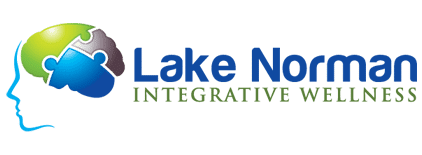Chemicals To Avoid
Toxic Chemicals: Flame Retardants Upholstered furniture is often treated with toxic brominated flame retardants, which can interrupt hormone processes in the body and lead to liver and thyroid toxicity. Manufacturers use an estimated 80,000 chemicals in products used around the home today, in everything from softeners in plastics to preservatives in cosmetics to treatments for stain-resistant upholstery. Unfortunately, few of these chemicals have been thoroughly tested, and the long-term health effects of their use are largely unknown. What’s more, a growing body of evidence links chronic diseases such as cancer, asthma, autism and reproductive problems to the chemicals in our homes, food, water and air. Although the situation can seem daunting, several simple precautions can help safeguard your family. Start by reducing your exposure to these three common chemicals. Flame retardants are synthetic chemicals widely applied to flammable petroleum-based products. Over the last 40 years, these chemicals have grown in popularity and are now commonly found in textiles, furniture, carpets, insulation and electronics. Among the most toxic are brominated flame retardants (BFRs), which include polybrominated diphenyl ethers (PBDEs). Studies have found PBDEs to be endocrine disruptors, which interrupt the hormone processes in the body. They may also cause liver and thyroid toxicity. Even minimal exposure at critical points in development can cause difficulties in learning, motor skills, memory and hearing, as well as damage to reproductive systems. Because flame retardants are not chemically bound to products, they are likely to leach out. PBDEs have been found to bio-accumulate in the food chain and do not readily break down in the environment. As a result, these chemicals have become widespread pollutants and are now commonly found in dairy products, fish and meat. To minimize your exposure: Avoid products made of synthetic fibers, and select naturally less-flammable alternatives such as wool, leather and organically grown cotton. Read product labels: They will sometimes state whether products contain flame retardants. Ask manufacturers what type of fire retardants they use. Children’s pajamas made from synthetic fabrics are commonly treated (as stated on the label), but snug-fitting cotton pajamas are frequently untreated. Note: Dr. Oz recently did a show that included the dangers of flame retardants (including baby and children’s furniture as well as the traditional furniture we all have in our homes). Please watch this video to find out more.
Toxic Chemicals: Formaldehyde
Formaldehyde is a colorless gas with a pungent odor that is used as a disinfectant, a preservative and a precursor for various resins in construction products. It is highly toxic and is used widely throughout the globe. The U.S. National Toxicology Program has labeled formaldehyde a known human carcinogen. Even at relatively low levels (above 0.1 parts per million), some people experience reactions to formaldehyde including watery eyes, nausea, difficulty breathing, burning in the eyes and throat, coughing and rashes. Common domestic sources of formaldehyde are building materials, cigarette smoke and unvented fuel-burning appliances. Pressed wood products with urea-formaldehyde resins such as particleboard, hardwood plywood paneling and medium-density fiberboard are all common sources of indoor formaldehyde contamination. To minimize your exposure: Whenever possible, choose solid wood products over pressed wood. Ask about the formaldehyde content of wood products such as furniture and cabinetry before purchasing; most responsible manufacturers will be able to provide formaldehyde testing results. Fortunately, formaldehyde emissions decrease over time, which means older furnishings are less likely to off-gas and makes used or antique furniture a safer option. If you do purchase furnishings likely to contain formaldehyde, you can reduce emissions by covering them with one of the clear sealants available from AFM Safecoat. The EPA also recommends purchasing “exterior-grade” pressed wood products because they contain phenol resins instead of urea resins. If you are using glues or binders indoors, choose formaldehyde-free options. Finally, maintain moderate indoor temperatures and reduce humidity levels—formaldehyde off-gases more readily in hot, humid environments.Toxic Chemicals: Triclosan
Widely used for its antibacterial, antiviral and antifungal properties, triclosan is commonly referred to under the trade names Microban, Amicor, UltraFresh and BioFresh. Triclosan can be found in countless consumer products including deodorants, hand soap, hand sanitizer, toothpaste (to prevent gingivitis), mouthwash, dish soap, and even kitchen utensils, toys, mattresses, shoe insoles, bedding and trash bags. Studies have found that low levels of triclosan can be absorbed through the skin and enter the bloodstream, and the chemical appears in the urine of 75 percent of the U.S. population, according to the Centers for Disease Control and Prevention. Animal tests have revealed that low levels of triclosan cause thyroid dysfunction and that maternal exposure causes fetal developmental problems. Studies have also detected a correlation between triclosan use and immune-system function as related to allergies and hay fever. Triclosan also wreaks havoc on the environment outside our homes: Experts believe the use of triclosan has assisted in the rise in antibiotic-resistant bacteria. Triclosan has been detected in waterways, where it is toxic to aquatic life, as only some is removed in the wastewater-treatment process. To minimize your exposure: Read product labels and avoid products containing triclosan. Manufacturers of most personal-care products are required by the FDA to list triclosan as an ingredient. Refer to the “Skin Deep cosmetic database” by the Environmental Working Group for safe alternatives. Other products such as toys, shower curtains and cutting boards may not specifically list triclosan as an ingredient, but are often labeled “antibacterial.” Note: The FDA is reviewing triclosan, an ingredient found in many consumer products, in light of recent studies that raise questions about the substance.
